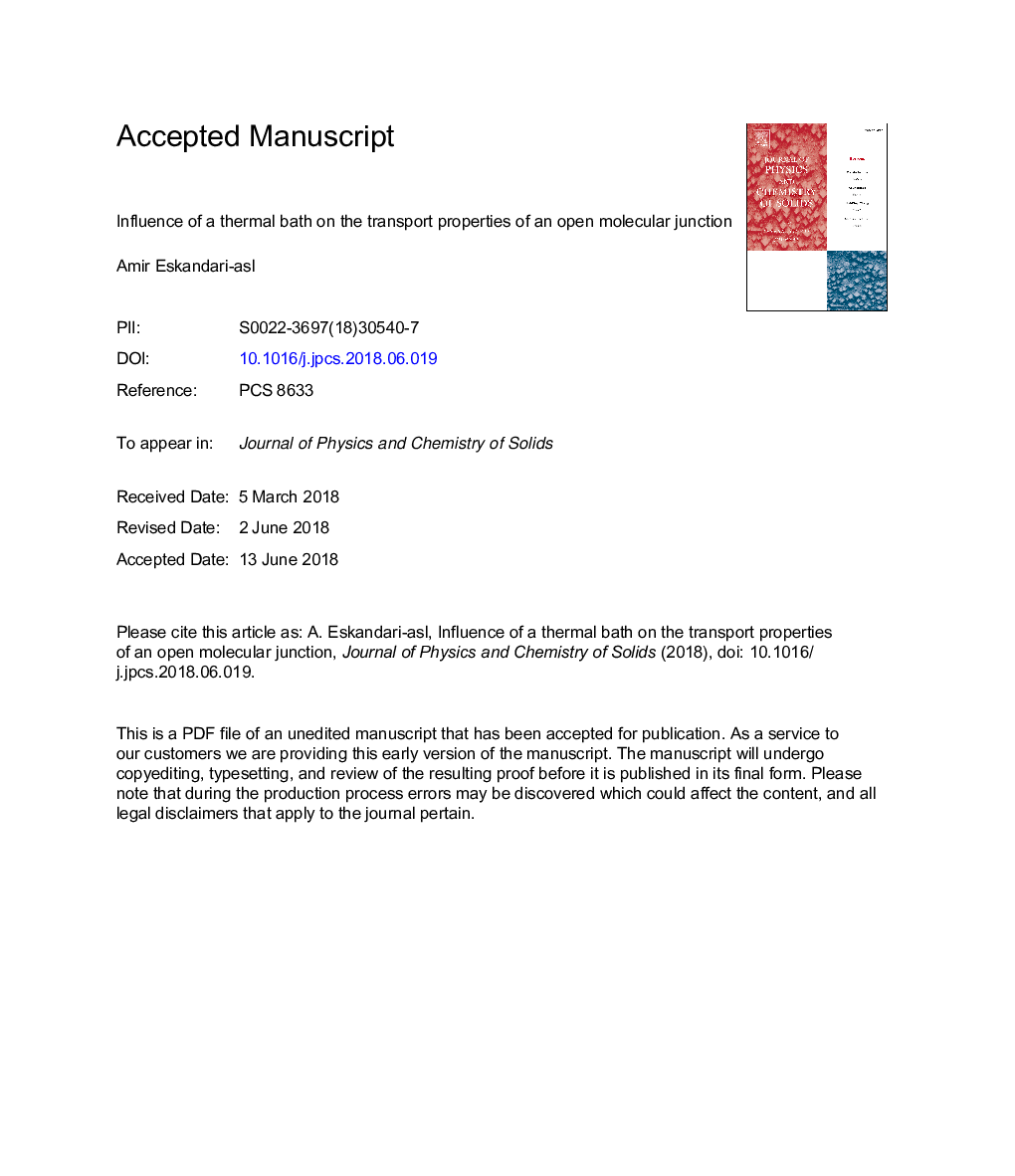| Article ID | Journal | Published Year | Pages | File Type |
|---|---|---|---|---|
| 7919871 | Journal of Physics and Chemistry of Solids | 2018 | 13 Pages |
Abstract
In a molecular junction (MJ) which connects two electrical leads, electron-phonon coupling has significant effects on the transport properties. However, the MJ is not thermally isolated and the phonons can be coupled to another thermal bath. For strong enough couplings, the bath thermalizes phonons on the MJ so that their number would be bias independent. However, in medium and weak coupling regimes, the number of phonons created in MJ depends on the bias voltage. Obtaining the master equation (ME) for this system and comparing the results with the case where we have no such thermal bath, we show that if the bath temperature is greater than the leads, at low bias voltages (where in the absence of the thermal bath the probability of phonon excitation is low), the thermal bath heats up our MJ and decreases electronic current. On the other hand, at high bias voltages the bath cools down MJ and increases the current. However, if the bath temperature is less than the leads, it always increases the current and the heat flows from the junction to the leads.
Related Topics
Physical Sciences and Engineering
Materials Science
Electronic, Optical and Magnetic Materials
Authors
Amir Eskandari-asl,
